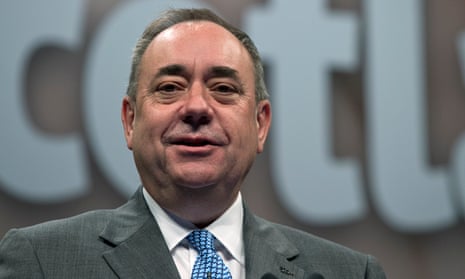Neck-and-neck polls currently fill the front pages, and the Scotland independence vote is “on a knife-edge” according to Yes Scotland chief executive Blair Jenkins. Observing how people engage on Facebook with both sides of the campaign, however, paints a different and more complex picture, revealing that both the yes and no campaigns stand to make gains in the final 24 hours through the use of social media.
The Yes Scotland campaign is now firmly in the lead in the Facebook stakes, with about 100,000 more likes than the Better Together (No Thanks) campaign. As of Wednesday morning, Yes Scotland had 309,102 fans compared with 210,681 fans for Better Together – and the numbers are likely to rise during the day.
Despite the higher fan base, updates from the yes campaign are proving less engaging than Better Together. To calculate the current engagement rate, you can divide the total “people talking about this” figure by the total number of fans (likes). Rather astonishingly for a Facebook fan page, the Better Together campaign has an engagement of over 100% because more actions are being achieved from their updates – multiple likes, comments and shares.
The yes campaign is achieving a reasonable 65% engagement rate (compare, for example, the Guardian’s Facebook page which has 13% engagement), but the Better Together campaign dwarfs this at 133%. The high engagement could also be an indication of trolling, suggesting perhaps that people are clicking “like” in order to write an abusive comment on the page and then “unliking” the page immediately after.
Analysing Better Together
Individual updates from the Better Together campaign are faring better than the Yes campaign, with data from BirdSong showing these updates achieve 38% more likes and 10 times more comments, though both campaigns average just over 300 shares per update. That both sides match on the average number of shares per update, despite the large gap in fanbase signifies that updates from Better Together are providing more compelling content to be shared.
Better Together focuses on the man on the street and financial statements around independence, including estimates of a more expensive weekly shop and the loss of tax benefits. In the run up to the polls, the emphasis appears to be increasingly on criticising Alex Salmond, with a post attacking Salmond’s currency plans garnering the greatest number of likes at nearly 12,000. A similar tactic, with a comparison of facts, is the most shared content from the same page.
Analysing Yes Scotland
The yes campaign focuses on personality and people for its updates, bringing the campaign to life with multiple stylised posts of politicians, such as an Obama style image of Gordon Brown.
The campaign makes great use of imagery, including a photo in most updates, mostly in the same stark retro political poster style. One of the most popular posts, however, does not make use of the cartoon style and instead simply pulls in poll data to affirm a strong position – a recent YouGov pool putting yes ahead of no has had almost 8,000 shares.
Many of the most popular yes updates focus around poll data instead of focusing on campaign messages. However, both parties have a short space of time to make an impact and so they should employ their social media tactics quickly. Here are some suggestions for campaigners behind both yes and no:
1. Focus on key messages
The yes campaign is gaining momentum but needs to focus more on statement and benefit messages to reinforce their poll success, not continually promote the poll result. Salmond bashing seems to be a popular sport for the no campaign but may wear thin as the polls close in.
2. Engage in the evening
There is almost no time left before polling. Both campaigns need to focus on their afternoon and evening presence today to engage Facebook users at work and at home. Brands and political parties are often guilty of ignoring social media at night, but for many people this is when they are keen and ready to engage. We would expect to see a 24-hour presence for both parties until the polls close.
3. Ask people to share
Stronger calls to action including “share this” need to be deployed to reach the widest possible audience before the voting tomorrow.
Jamie Riddell is co-founder of on-demand social media analytics platform BirdSong
To get weekly news analysis, job alerts and event notifications direct to your inbox, sign up free for Media Network membership.
All Guardian Media Network content is editorially independent except for pieces labelled ‘Advertisement feature’. Find out more here.

Comments (…)
Sign in or create your Guardian account to join the discussion